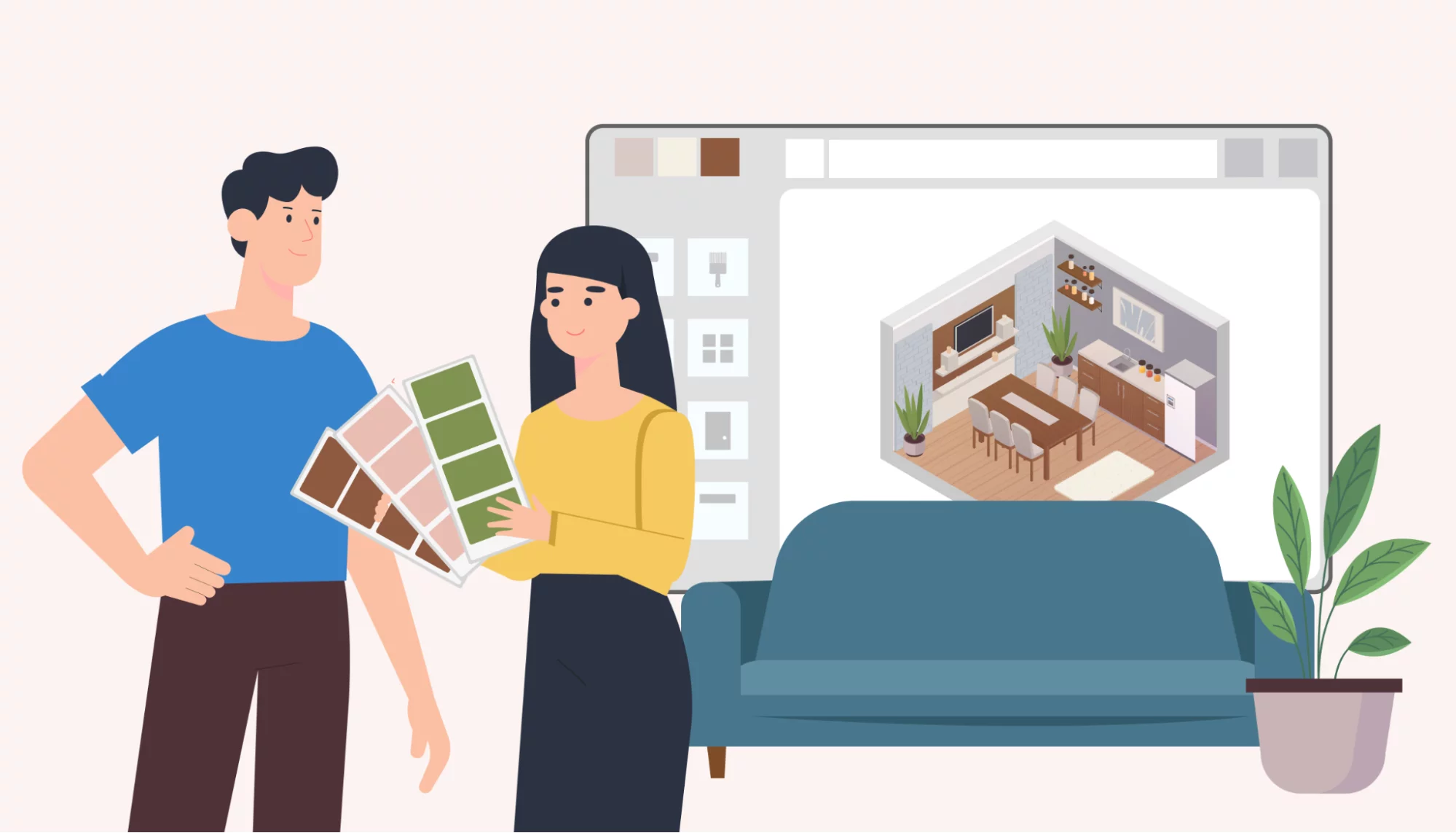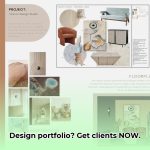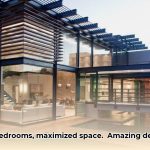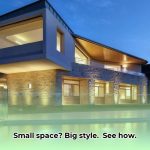Knock, knock! It’s time to open the door to the thrilling world of interior design project management. This comprehensive guide will equip you with the knowledge and tools to orchestrate flawless interior design projects, transforming any space into a work of art. Whether you’re a seasoned pro or a design enthusiast embarking on your first project, this guide will be your trusted companion throughout the journey.
Interior Design Project Management: Making Design Dreams a Reality
What is Interior Design Project Management?
Imagine this: you’re finally ready to transform your dream home into a reality. Pinterest boards are overflowing with inspiration, paint swatches are meticulously organized, and your mind races with exciting ideas. But how do you translate those dreams into a functional, beautiful space without losing yourself in the process? This is where the magic of interior design project management comes in.
Interior design project management is the bridge between inspiration and reality. It’s the art of seamlessly blending creative vision with the practicalities of bringing that vision to life–on time, within budget, and without unnecessary stress. It ensures your vision remains clear, from the initial brainstorming session to the final, satisfying reveal of your transformed space.
What makes this blend so special?
- Creativity meets organization: Interior design project management transcends simply choosing aesthetically pleasing furniture. It’s about harmonizing your style, functional needs, and budget into a cohesive, workable plan.
- Happy client, happy project: Your vision and satisfaction are at the heart of every successful project. A skilled project manager listens attentively, understands your desires, and guarantees your dream space authentically reflects your unique personality.
- A journey, not a sprint: Creating a space you love is a process best enjoyed one step at a time. It’s about savoring each stage, from initial concepts to selecting materials, coordinating deliveries, and placing that final, perfect accessory.
- Setting the stage for success: Clear plans, realistic budgets, and open communication are the foundational pillars of a smooth, stress-free project.
- Navigating the bumps in the road: Every project encounters unexpected detours. However, with proactive communication and a well-structured plan, potential problems transform into manageable hurdles, keeping your project moving smoothly towards the finish line.
In essence, interior design project management is the secret ingredient that transforms your design dreams into a tangible, livable reality. It’s about relishing the process, knowing you have a trusted expert by your side, guiding the way and ensuring your vision shines through in every detail.
The Keys to Success: Organization, Collaboration, Communication
Successfully bringing your design vision to life hinges on three crucial elements: meticulous organization, seamless collaboration, and crystal-clear communication.
- Organizational Prowess: Think of yourself as the architect of your project. Begin by crafting a crystal-clear plan, outlining every step from conception to completion. Define the scope of work, establish realistic deadlines, and meticulously break down the project into manageable tasks. This meticulous approach ensures everyone involved understands their role and responsibilities.
- Collaboration is Key: Remember, you’re not on this journey alone. Cultivate a collaborative environment where open communication flows between you, your designer, contractors, and suppliers. Regular check-ins, brainstorming sessions, and active listening are vital to maintaining a unified front and keeping everyone aligned with the project’s vision.
- The Power of Communication: Effective communication is the lifeblood of any successful project. Foster a culture of transparency by keeping everyone informed about progress, challenges, and any necessary adjustments. Regularly share updates, minutes from meetings, and encourage open dialogue to address concerns promptly.
Harnessing the Power of Technology
Thankfully, gone are the days of juggling endless spreadsheets and drowning in a sea of emails. Today’s sophisticated project management software empowers you with the tools to streamline every aspect of your design project. Think of it as having a dedicated personal assistant for your project, efficiently managing tasks, tracking progress, and ensuring a seamless flow of information.
These platforms simplify everything from sharing design plans and revisions to monitoring furniture order statuses, fostering a centralized hub where the entire team can stay synchronized. One of the most significant advantages is the ability to provide clients with immersive virtual presentations, allowing them to experience the design firsthand. This immersive experience simplifies the feedback and approval process, making it efficient and engaging.
The Skills Every Design Manager Needs
Successfully navigating the world of interior design project management requires a unique blend of creativity, organizational prowess, and exceptional interpersonal skills. Here are the essential skills you’ll need to excel in this role:
- Solid Design Foundation: A strong understanding of design principles is paramount. This includes a keen eye for color theory, a grasp of spatial planning, and the ability to discern various design styles, from Bauhaus to Art Deco.
- Exceptional People Skills: Navigating the intricacies of client expectations, negotiating with contractors, and maintaining a harmonious project environment requires top-notch people skills. Your ability to effectively communicate, empathize, and find common ground will be invaluable.
- Industry Acumen: The world of design is constantly evolving. Staying ahead of the curve requires a commitment to continuous learning. Stay up-to-date on the latest industry trends, innovative materials, and emerging technologies to provide your clients with the best possible experience.
Embracing the Future of Design Management
The future of design project management is brimming with exciting possibilities. Cloud-based platforms have revolutionized collaboration, enabling you to seamlessly connect with your team and clients from any corner of the world.
Emerging technologies like virtual and augmented reality are transforming how we experience and interact with design. Imagine clients walking through a virtual representation of their future living room, experiencing the textures, spatial arrangements, and lighting firsthand. This immersive technology allows for a deeper understanding of the design intent and facilitates informed decision-making.
Sustainability is no longer a passing trend but a fundamental principle in modern design. Incorporating eco-friendly materials and environmentally responsible practices is crucial for minimizing the environmental impact of design projects.
The Interior Design Project Management Process: A Step-by-Step Guide
Now that we’ve explored the fundamental principles of interior design project management, let’s delve into the step-by-step process that will transform your vision into a stunning reality.
Okay, but how do we actually make this happen? Let’s break it down step-by-step:
Step 1: Getting Everyone on the Same Page (Project Overview)
Before embarking on your design journey, it’s essential to establish a clear understanding of your destination.
- Define the Project Scope: What are you hoping to achieve with this project? Are you renovating a single room or embarking on a complete home makeover? Clearly defining the project scope ensures everyone is working towards the same goal.
- Establish Your Must-Haves: What are the non-negotiable elements of your project? Perhaps it’s a specific type of flooring, a particular color scheme, or incorporating sustainable materials. Clearly communicating your must-haves helps your designer tailor the project to your specific needs.
- Uncover Your Nice-to-Haves: While must-haves are essential, it’s also helpful to identify elements you’d love to have if budget and time allow. These could include statement lighting fixtures, custom built-ins, or incorporating a specific piece of art.
- Identify Your Deal Breakers: Just as essential as your must-haves is recognizing elements that are absolutely unacceptable. This could be a particular style you dislike, a material you don’t want used, or a budget you’re unwilling to exceed. Clearly communicating your deal breakers ensures the project stays true to your vision.
Step 2: Teamwork – It Really Does Make the Dream Work (Communication and Collaboration)
Collaboration is at the heart of every successful interior design project.
- Assemble Your Dream Team: Surround yourself with experienced professionals who share your vision. This includes your interior designer, contractors for various aspects of the project (e.g., electrical, plumbing), and potentially an architect if structural changes are involved.
- Establish Open Communication Channels: Choose communication methods that work best for everyone involved. This could include regular meetings, email updates, project management software, or even a dedicated messaging group. The key is to ensure everyone feels comfortable sharing updates, asking questions, and addressing concerns.
- Active Listening is Crucial: Encourage active listening during meetings and discussions. This means paying attention to what others say, asking clarifying questions, and ensuring everyone feels heard and understood.
Step 3: Planning Your Way to Success (Planning and Coordination)
A well-structured plan is the roadmap to a successful project.
- Develop a Detailed Project Plan: This plan should outline every task involved in the project, assign responsibilities, and establish realistic deadlines. A Gantt chart is a helpful tool for visualizing the project timeline and dependencies between tasks.
- Create a Communication Schedule: Determine how often you’ll communicate with your team and clients. This could involve weekly progress reports, bi-weekly meetings, or monthly site visits, depending on the project’s complexity.
- Establish Quality Control Checkpoints: Incorporate quality control checkpoints throughout the project to ensure everything aligns with your vision and meets the required standards. These checkpoints could involve reviewing design plans, inspecting materials, or conducting walkthroughs during construction.
Step 4: Show Me the Money! (Budget and Resource Management)
Managing your budget effectively is crucial for staying on track and avoiding unwelcome surprises.
- Create a Realistic Budget: Work with your designer to develop a detailed budget that outlines all anticipated costs. This includes design fees, materials, labor, permits, and a contingency fund for unexpected expenses.
- Track Expenses Meticulously: Monitor all project-related expenses closely. Utilize spreadsheets, accounting software, or project management tools to track invoices, payments, and any budget adjustments.
- Explore Cost-Saving Opportunities: Don’t be afraid to explore creative ways to save money without compromising your vision. This could involve sourcing materials from different suppliers, opting for pre-owned furniture pieces, or phasing the project over time.
Step 5: From Dream to Reality: The Project Phases (Project Phases)
Get ready to witness your vision come to life as your project progresses through seven distinct phases:
- Pre-Design: This phase is all about gathering inspiration, defining your style, and creating a visual representation of your desired aesthetic.
- Gather Inspiration: Explore design magazines, websites, social media platforms like Pinterest, and visit furniture showrooms to gather inspiration for your project.
- Define Your Style: Determine the overall style you want to achieve. Are you drawn to modern minimalism, cozy farmhouse charm, or eclectic bohemian vibes?
- Create Mood Boards: Assemble mood boards with images, fabric swatches, and color palettes that reflect your desired style. This visual representation will serve as a guide for your designer.
- Concept Development: In this phase, you’ll work closely with your designer to translate your vision into concrete design concepts.
- Space Planning: Determine the optimal layout for your space, considering traffic flow, furniture placement, and functional needs.
- Preliminary Sketches: Your designer will present you with preliminary sketches and floor plans, allowing you to visualize the proposed design.
- Material and Color Exploration: Begin exploring different materials, finishes, and color palettes to establish the overall aesthetic direction.
- Schematic Design: During this phase, your design concepts will be further refined and developed into detailed drawings and plans.
- Detailed Floor Plans: Receive more detailed floor plans, including furniture layouts, electrical and plumbing fixtures, and door and window placements.
- Elevations and Sections: Review elevations (views of walls) and sections (cut-away views of the space) to understand the design in three dimensions.
- 3D Visualizations: Depending on your designer’s capabilities, you may receive 3D visualizations or renderings that provide a realistic representation of the finished space.
- Design Development: This phase is all about finalizing design choices, selecting materials, and solidifying the project’s aesthetic direction.
- Finalize Material Selections: Make final decisions on flooring, paint colors, countertops, tiles, and other finishes.
- Select Furniture and Fixtures: Choose furniture pieces, lighting fixtures, plumbing fixtures, hardware, and other decorative elements that align with your style and budget.
- Refine Design Details: Fine-tune the design by reviewing millwork drawings, selecting window treatments, and finalizing accessories.
- Construction Documents: This phase involves creating the detailed drawings and specifications required for construction.
- Construction Drawings: Receive a comprehensive set of construction drawings that convey the design intent to the contractors.
- Specifications: Review detailed specifications that outline the quality, type, and quantity of materials to be used in the project.
- Permitting: Depending on the scope of your project, your designer will help you navigate the process of obtaining necessary building permits.
- Construction Administration: Get ready for the exciting (and sometimes challenging) phase of construction!
- Contractor Selection: Carefully select a reputable contractor who understands your project and shares your commitment to quality.
- Regular Site Visits: Conduct regular site visits to monitor progress, address any concerns, and ensure the project stays on track.
- Communication is Key: Maintain open and transparent communication with your contractor throughout the construction phase.
- Post-Construction: Congratulations! Your dream space is now a reality.
- Final Walkthrough: Conduct a final walkthrough with your contractor to inspect the completed work, identify any deficiencies, and ensure everything meets your expectations.
- Punch List: Create a punch list of any remaining touch-ups or adjustments needed.
- Project Closeout: Finalize payments, obtain warranties and manuals for appliances and fixtures, and celebrate the successful completion of your project!
Step 6: Keeping Things on Track (Monitoring and Evaluation)
Regularly monitoring and evaluating your project’s progress is essential for staying on schedule and addressing any issues promptly.
- Review the Project Plan: Regularly review your project plan, assess whether tasks are being completed on time, and identify any potential roadblocks.
- Track Progress Against Deadlines: Utilize project management software, spreadsheets, or wall calendars to visually track progress against established deadlines.
- Conduct Regular Check-in Meetings: Schedule regular meetings with your team and clients to discuss progress, address concerns, and make adjustments to the plan as needed.
Step 7: The Grand Finale (Project Completion and Handover)
Congratulations on reaching the finish line! It’s time to celebrate the culmination of your hard work and enjoy your stunning new space.
- Celebrate Your Success: Host a small gathering or simply take some time to appreciate the transformation and acknowledge the collective effort that made it possible.
- Gather Documentation: Ensure you receive all relevant documentation, including warranties, manuals, and contact information for contractors and suppliers.
- Enjoy Your New Space! Relax, unwind, and savor the beauty and functionality of your thoughtfully designed space.
Remember: Interior design project management is a fluid process that requires flexibility and adaptability. Don’t be afraid to embrace the unexpected detours and challenges that may arise. With careful planning, open communication, and a collaborative spirit, you’ll navigate the process with confidence and achieve a final result exceeding your expectations.
Essential Skills for Effective Interior Design Project Management
We’ve explored the “why” of interior design project management. Now, let’s dive into the “how.” Mastering this multifaceted field requires a unique symphony of creativity, logistical expertise, and effective communication.
Keeping it Real: Skills That Make a Difference
To ensure your design symphony plays a harmonious tune, you’ll need a diverse skillset that extends beyond choosing the perfect paint color. You are more than just a designer; you are the conductor, orchestrating every element to create a masterpiece.
The Need-to-Knows:
- Plan Like a Pro: Imagine building a house without a blueprint—chaos would ensue. The same principle applies to design. Get crystal clear on your vision, delegate responsibilities, and establish a realistic timeline.
- Talk it Out: Communication is the bedrock of a successful project. Ensure crystal-clear expectations, keep everyone in the loop, and make sure everyone feels heard.
- Teamwork Makes the Dream Work: Two heads are undoubtedly better than one, especially when it comes to design. Encourage a collaborative environment where everyone feels empowered to share their ideas, perspectives are respected, and creative solutions emerge from collective brainstorming.
- Roll with the Punches: Let’s face it—no project unfolds perfectly according to plan. Unexpected hiccups are inevitable. Your ability to adapt to these challenges, adjust your sails when needed, and find creative workarounds will distinguish you as a project management maestro.
Let’s Break it Down:
- Planning Proficiency: No More Flying by the Seat of Your Pants
- Crystal Clear Vision: Before you even pick up a paintbrush, take the time to solidify the overall vibe and goals. Are we going for modern and sleek or cozy and rustic?
- Timeline is Everything: Break the project down into smaller, manageable chunks. Think of it like a recipe—first the foundation, then the walls, and finally, the finishing touches.
- Resource Allocation 101: Make the most of what you’ve got, whether it’s budget, materials, or even time. Think of yourself as a resourceful chef, making a gourmet meal even with pantry staples.
- Communication Mastery: Because Nobody Likes a Misunderstanding
- Open Door Policy: Encourage everyone involved—clients, contractors, suppliers—to speak their minds and share updates freely.
- Listen Up: Truly hearing what your clients envision is crucial. Ask questions, take notes, and don’t be afraid to repeat things back to make sure you’re both on the same wavelength.
- Tech to the Rescue: Emails, project management apps, even good old-fashioned text messages can help streamline communication and keep everyone informed.
- Collaboration Expertise: Because Two Heads (or More!) Are Better Than One
- All Aboard the Idea Train: Get everyone involved right from the start. Fresh perspectives can spark unexpected and brilliant solutions.
- Delegate Like a Boss: Know your team’s strengths and assign tasks accordingly. Trusting others with responsibility not only lightens your load but also helps them grow.
- Feedback is Golden: Encourage constructive criticism and suggestions. A little feedback can go a long way in refining ideas and ensuring everyone feels heard.
- Adaptability Agility: The Art of the Pivot
- Expect the Unexpected: Delays, changes in plans, unexpected hiccups—they happen! Don’t panic, just roll with it.
- Flexibility is Key: Be ready to adjust your sails when needed. Sometimes a small change in the plan can prevent a major headache down the road.
- Think Outside the Box: Obstacles are opportunities in disguise. When challenges arise, get creative and think outside the box to find workable solutions.
The Bottom Line:
Mastering these essential skills is like leveling up in the world of interior design project management. You’ll be well-equipped to create stunning spaces that delight your clients and stand the test of time. Remember, it’s not just about the end result—it’s about the collaborative journey, the creative problem-solving, and the shared sense of accomplishment that makes it all worthwhile.
Considering hiring a renowned photographer to capture the essence of your newly designed space? Explore our page for interior design photographers in Los Angeles and find the perfect match to showcase your project’s brilliance.
Seeking inspiration to ignite your creativity? Check out our curated collection of interior design samples and discover a world of stunning designs that will fuel your imagination.
Located in the enchanting desert oasis of Palm Springs and in need of a skilled designer? Visit our page dedicated to interior designers in Palm Desert and connect with the best professionals in the industry who can transform your desert dreams into a reality.
- Modern Mexican Interior Design: Create a Vibrant Home - September 12, 2025
- Discover Zimbabwe Traditional Interior Design: A Modern Guide - September 8, 2025
- Master Interior Design Online: Fast Track Your Career - September 5, 2025










